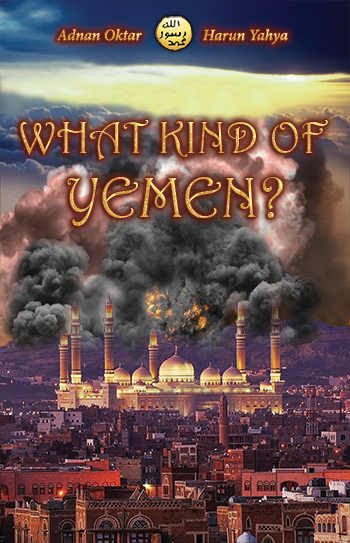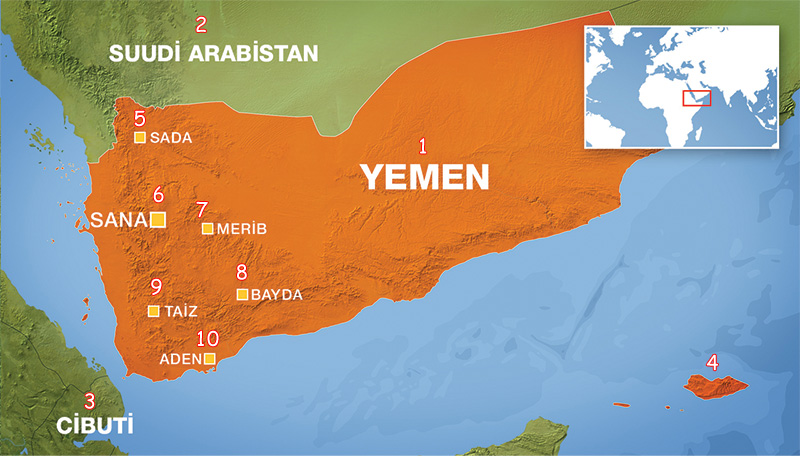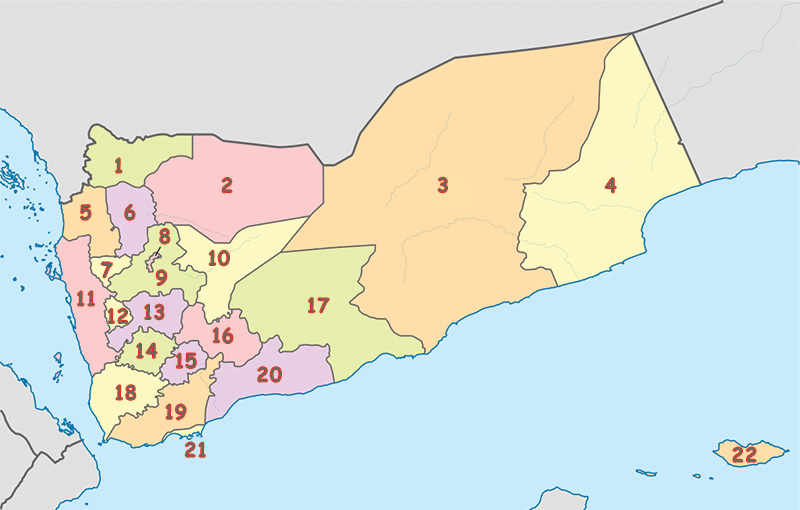Bigotry: The Dark Danger
What Kind of Yemen?

DOWNLOAD THE BOOK
CHAPTERS OF THE BOOK
- Introduction
- Two Countries Geographically Far Apart But Very Close in Heart and Soul: Yemen and Turkey
- Yemen, But What Sort of Yemen?
- The Problem of Poverty in Yemen and Regeneration
- How To Ensure the National Unity of Yemen?
- How Can Yemen Best Make Use of Its Natural Wealth?
- Women's Place in Yemeni Society
- The Lowest Common Denominators the Parties in Yemen Can Agree on
- The Importance of Individual Rights and Freedoms in Yemen
- Terror Is Again at the Top of Yemen's Agenda
- The Corruption Eating Away at Yemen from the Inside
- One of the Dozens of Problems Facing Yemen Is Immigration
- Key to Democracy and Development in Yemen: Education
- Countries Swamped by Debt and Interest
- Political Life in Yemen
- Why Is Military Spending Significant?
- Houthis Are the Brothers of All Yemenis
- Yemen Must Not Fall into the Trap of Identity Politics
- The Protests in Yemen Should Not Turn into a Mass Frenzy
- Mindsets Need To Change for A Permanent Peace in Yemen
- What Can Be Done To Ensure Stability in Yemen?
- Will the New Government in Yemen Bring Stability?
- Yemen Doesn't Deserve To Be A Failed Country
- The Problems of Yemen Can Be Solved When A Strong National Security Is Built
- Military Operations Do Not Always Produce A Solution
- Political Instability in Yemen Is Having a Damaging Effect on Children
- Spirit of Unity a Must for Yemen's Political Transition
- What Yemen Needs Is a Spirit of Union and Unity
- Yemenis Must Be Friends, Not Enemies
- There Is Still Hope for Peace and Democracy
- The Struggle for Power Must Not Break Yemen Apart
- Yemen Must Not Become a Trojan Horse on the Arabian Peninsula
- Developments in Bahrain, Yemen and Other Islamic Countries Must Not Be Allowed To Turn into A Sectarian Conflict
- Is This the Will of Yemenis or the Global Powers?
- Operation Decisive Storm Brings Not Stability But Death to Yemen
- Turkey Asks for Peace in Yemen, Not War
- Deaths Cannot Stop More People Being Killed
- Yemen Needs Urgent Ceasefire
- What Is Happening in Yemen Is No Longer a Political, but a Humanitarian Crisis
- An International Model To Put an End to the Conflict in the Islamic World Is Possible
- A Lack of Quality Is Feeding the Conflicts in the Islamic World
- Yemen: A Country That Nobody Sees and Nobody Hears
- The Only Solution to the Tragedy in Yemen: The Reconstruction of Peace and Love
- Conclusion
< <
5 / total: 44
How To Ensure the National Unity of Yemen?National Yemen, March 21st 2014
While European countries have been working on ways to achieve more unity, Middle Eastern countries have been busy seeking ways to further separate from each other. Clashes and conflicts have become a common sight in the region due to ethnical and sectarian differences in the population. Yemen is one of those countries hit by separationist winds. The South Yemen Movement, founded in early 2007, has declared its desire to break away from the North, claiming that the 'South's national resources have been exploited by the central government'. To help address the issue, the Yemeni government has chosen to move to a federalized system of governance in order to prevent a breakaway.
According to the plan, Sana'a was going to be the federal capital city while Aden would be given a different status, as it is a commercial center. Yemen would be officially divided into six states; four states in the north and two in the south to be ruled by their own federal governments. This plan was also said to be giving the states independent judicial and executive powers, and would come into effect if approved with a referendum. But will this new system really be a solution to the problems of Yemen? To understand that, we first have to examine what powers will be given to the states and what kind of ties will be built between the states and the federal capital city of Sana'a. This has yet to be clarified. Federal governments and unitary governments are the most common methods of administration used in the countries of the world today. In unitary governments, the country is an inseparable whole. Even if it has cities and provinces, they are merely administrative regions and are governed by officials appointed by the central government. The central government makes administrative, judicial and financial decisions that impact the entire country. As a matter of fact, this is how the system works currently in Yemen.
In a federal government, the country is divided into multiple states and even if the nation seems to stand as one, every individual state acts like a separate region within itself. They can independently make administrative, judicial and financial decisions and put them into practice. However, their powers are not unlimited; they answer to the central government and this level of accountability is regulated by the federal constitution. In federal systems, the issues that will occur in terms of division of power between federal administrations and the central government usually creates sluggishness in the enforcement of policies that concern the entire country, which in time may turn into large crises. In federal systems, every state tends to look out for their own interests and naturally, it would be far more difficult to equally distribute the wealth to the entirety of the country. In summary, a shift to a federal system in Yemen has the potential to escalate separatist sentiment, rather than alleviate it. The new states will be shaped by ethnic and sectarian differences. Therefore, it is likely that there will be regional wave of immigration, and ethnic cleansing, which would surely add fuel to the fire.
Even if there are measures that can be taken to prevent states from seceding and turning into independent countries, this happens quite frequently, and if the federalized states are based on ethnical or religious divisions, such as in the case of Quebec in Canada or Kashmir in India, the request to 'secede' inevitably comes. Varying levels of economic development also fuel such desires. For instance, Catalonia, which has a well-developed industrial base and economy, wishes to break away from Spain claiming that its resources are being used by the other states. Needless to say, the people of Yemen will decide which option is the best for them after evaluating the pros and cons of all the alternatives being presented to them. No matter what system they choose, every Yemeni should know that being united is a command of God for Muslims, and therefore they should avoid separation and unite. God orders Muslims in the Qur'an that they should act in unison as a 'single community': Hold fast to the rope of God all together, and do not separate. Remember God's blessing to you when you were enemies and He joined your hearts together so that you became brothers by His blessing. You were on the very brink of a pit of the Fire and He rescued you from it. In this way God makes His signs clear to you, so that hopefully you will be guided. (Surah Al 'Imran, 103) Preserving the integrity of Yemen within a democratic framework is surely possible through an alliance of good and reasonable people in Yemen, regardless of the system chosen. If Yemen can do this, it will set a great example to the Islamic world. Muslims need unity, not separation. Yemen has a great opportunity ahead: it can be the country that chose the long-awaited union of Muslims, rather than choosing artificial divisions.
|
|||||||||||||||||||
5 / total 44
You can read Harun Yahya's book What Kind of Yemen? online, share it on social networks such as Facebook and Twitter, download it to your computer, use it in your homework and theses, and publish, copy or reproduce it on your own web sites or blogs without paying any copyright fee, so long as you acknowledge this site as the reference.




